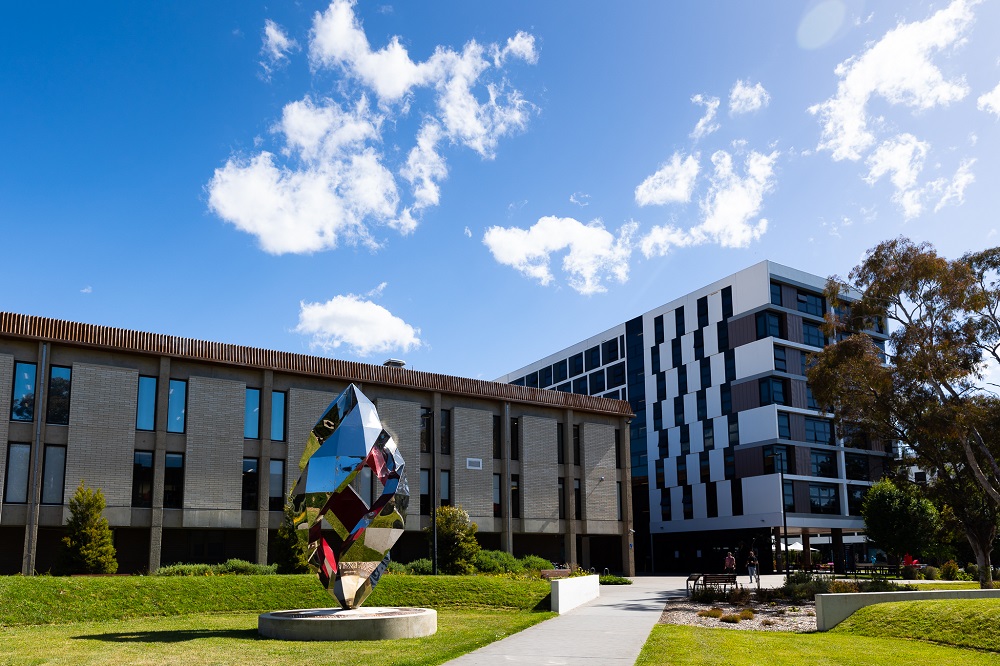Kelly White
23 November: Two teams from the University of Canberra’s Faculty of Arts and Design (FAD) have successfully secured funding from the Australian Research Council research projects as part of the ARC’s Linkage Projects scheme.
The Australian Research Council (ARC) announced more than $26 million worth of funding for 50 research projects to be undertaken as part of the first round of the scheme, which supports initiatives that develop enduring strategic research partnerships.
Two University-led projects have been awarded funding – Nuclear Nation: a contemporary archaeology of Australia's atomic heritage and New approaches measuring Australia’s creative workforce: Beyond the Census.
Nuclear Nation: a contemporary archaeology of Australia's atomic heritage, led by Professor Tracy Ireland in collaboration with Associate Professor Alison Wain, and Lecturer in Cultural Heritage, Ashley Harrison, brings together leading academics, curators, scientists and First Nations researchers to generate new understandings of the significance of Australia’s atomic heritage in a global context.
The project will see the researchers partner with the Museum of Applied Arts and Sciences (MAAS) and the Australian Nuclear Science and Technology Organisation (ANSTO) to better understand the relationship between science, technology and Australian society by analysing the heritage values of the material legacy left by Australia’s nuclear industries – from early 20th century radium mining to contemporary defence, industrial, medical and scientific applications.
The program will also fund a postdoctoral research position for First Nations researcher Ashley Harrison and a PhD scholarship for an Indigenous scholar.
“We’re thrilled that this unique project has been successful,” Professor Ireland said.
“We aim is to share these research findings widely through digital visualisations, object stories, First Nations-led narratives and resources for exhibitions, focusing on the collections of the partner organisations.
“We hope that these fresh interpretations of Australia’s nuclear heritage and history will contribute to contemporary debates about future national approaches to nuclear energy policy, and national Reconciliation and truth-telling about these often difficult colonial histories.”

New approaches measuring Australia’s creative workforce: Beyond the Census, led by Professor Stuart Cunningham in collaboration with Dr Jee Young Lee,will focus on reevaluating and improving how creative industries are measured in official data.
Professor Cunningham said the initiative aims to better measure the creative workforce, which is a growing but poorly understood part of our economy and society.
“We know that lots of people in creative positions are working multiple jobs, but currently, the Australian Census measures your employment by the job in which you earn the most,” he said.
“We know the creative workforce is growing. We also know that it’s difficult to measure. Many of these people work in the gig economy, and may not do their creative work as their main job, so we miss a lot of the economic impact of their work due to limitations of the methodology used in the Census.”
Partners for this project include RMIT University, Creative Australia, The Council of the City of Sydney, Arts South Australia and Western Australia’s Department of Local Government, Sport and Cultural Industries.
Professor Cunningham highlighted rapid changes in the employment landscape and the need to update official measurement methodologies to ensure the creative workforce is accurately captured in economic measurements.
“We’ve seen major digital changes in the workforce. For example, social media influencers and social media managers and marketers are now widespread creative occupations, but official statistics don’t capture these emerging employment categories,” Professor Cunningham said.
“Our partners represent national, state and municipal layers of government, so this research has very real potential to impact all levels of government activity – which will be of great value to people working in arts, culture and media.”


